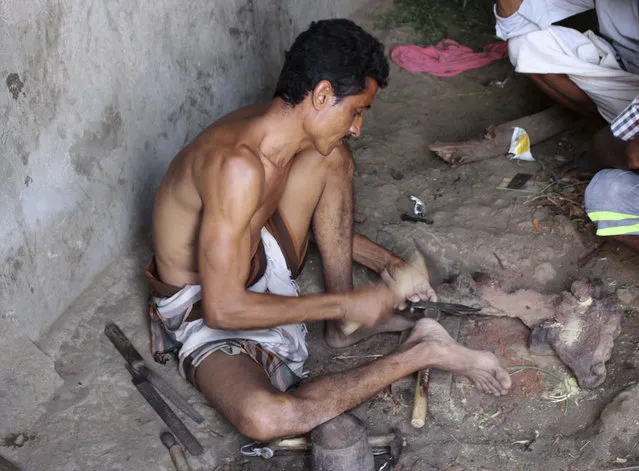
In this October 6, 2018, photo, a craftsman makes daggers or “Jambiyya” in Yemeni Arabic, made out of remains of missiles, at his workshop, in Hajjah, Yemen. Missiles raining on Yemen from the jets of the Saudi-led coalition fighting Houthi rebels are killing thousands of civilians and militiamen alike, but amid crashing economy, some Yemenis see the bright side of it: they make daggers out of the fragments of the missiles for ordinary men traditionally wear for prestige and a show of courage. Janbiya, also spelled jambia, jambya, jambiya, and janbia, is the Arabic term for a specific type of dagger with a short curved blade and a medial ridge that originated from Yemen. Men typically above the age of 14 wear it as an accessory to their clothing. A significant part of a janbiya is its hilt. Different versions of saifani hilts can be distinguished by their colour. Apart from the material used for the hilt, the design and detail is a measure of its value and the status of its owner. Despite the cultural significance of the janbiya, it is still a weapon. Although people have used it in times of dispute, there are societal and Islamic norms that must be followed in order to avoid defamation. The janbiya should only come out of its sheath in extreme cases of conflict. It is also commonly used in traditional events, such as dances. Like with some other curved knives, as the blade bends towards the opponent, the user need not angle the wrist, which makes it more comfortable as a stabbing weapon than straight-bladed knives. Its heavy blade enables the user to inflict deep wounds and to cut through muscle and bone. It also makes it possible to cut and twist the blade upwards, slitting internal organs such as intestines, or to reach heart, lungs or liver more easily, making it a formidable and much feared weapon, whose use is thus restricted by societal rules. (Photo by Hammadi Issa/AP Photo)
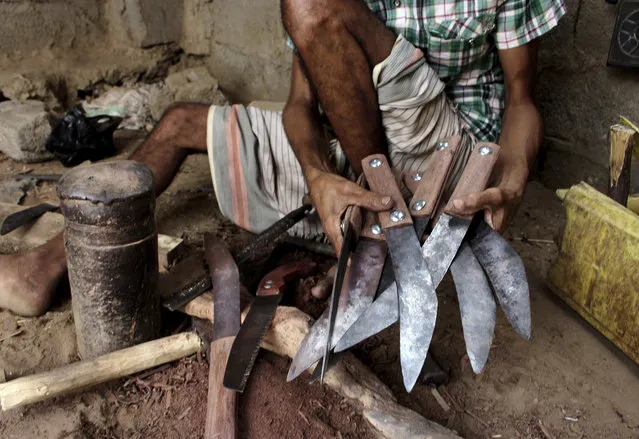
In this August 4, 2018, photo, a craftsman makes daggers or “Jambiyya” in Yemeni Arabic, made out of remains of missiles, at his workshop, in Hajjah, Yemen. (Photo by Hammadi Issa/AP Photo)
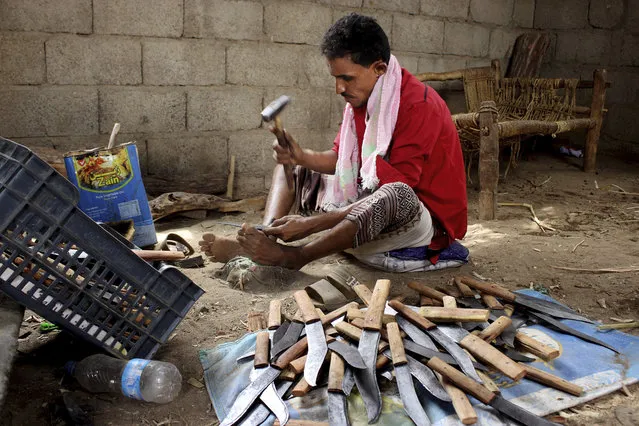
In this August 4, 2018, photo, a craftsman makes daggers or “Jambiyya” in Yemeni Arabic, made out of remains of missiles, at his workshop, in Hajjah, Yemen. (Photo by Hammadi Issa/AP Photo)
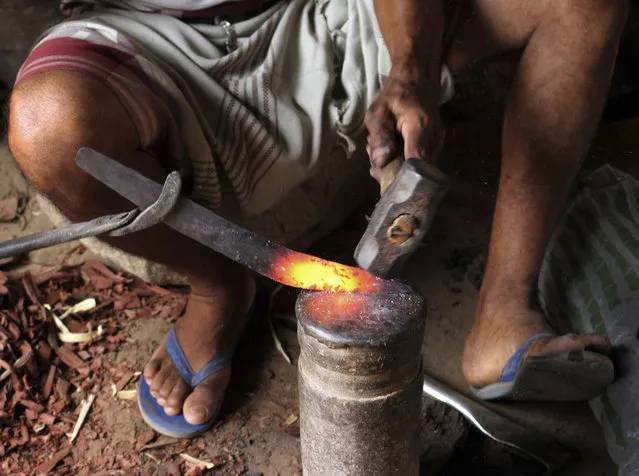
In this August 4, 2018, photo, a craftsman makes daggers or “Jambiyya” in Yemeni Arabic, made out of remains of missiles, at his workshop, in Hajjah, Yemen. (Photo by Hammadi Issa/AP Photo)
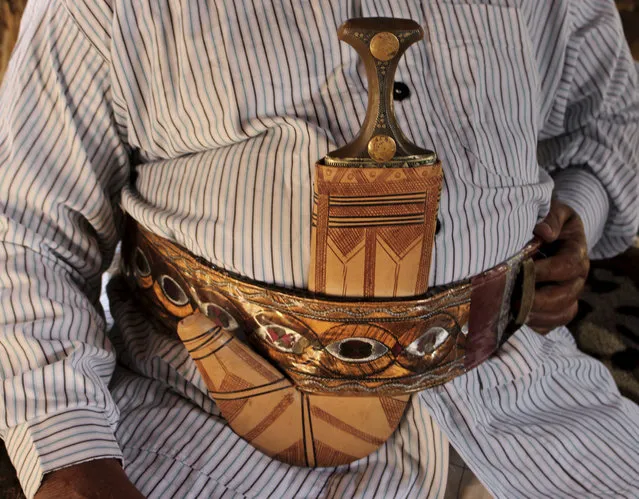
In this October 6, 2018, photo, a man wears a dagger or “Jambiyya” in Yemeni Arabic, made out of remains of missiles, in Hajjah, Yemen. (Photo by Hammadi Issa/AP Photo)
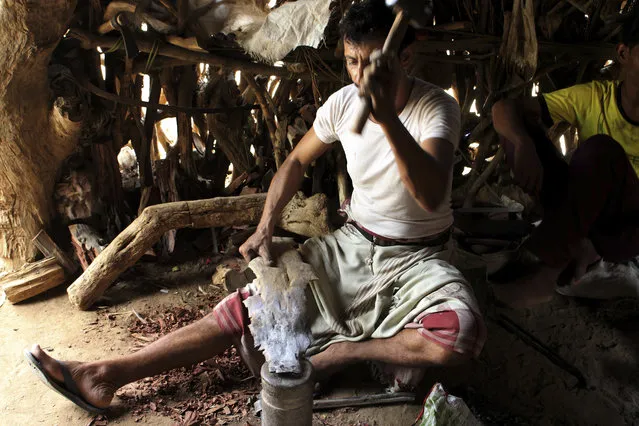
In this August 4, 2018, photo, a craftsman makes daggers or “Jambiyya” in Yemeni Arabic, made out of remains of missiles, at his workshop, in Hajjah, Yemen. (Photo by Hammadi Issa/AP Photo)
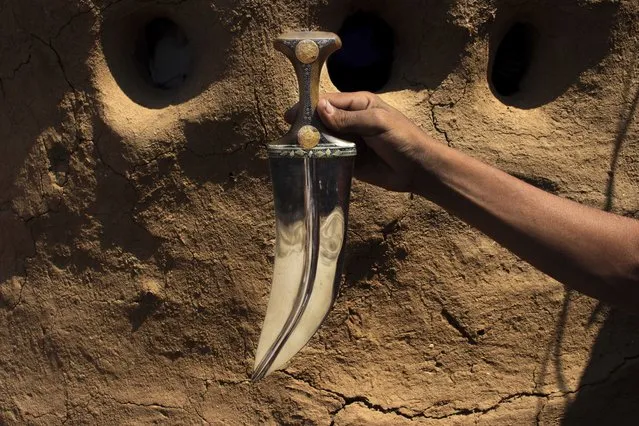
In this October 6, 2018, photo, a craftsman holds a dagger or “Jambiyya” in Yemeni Arabic, made out of remains of missiles, in Hajjah, Yemen. (Photo by Hammadi Issa/AP Photo)
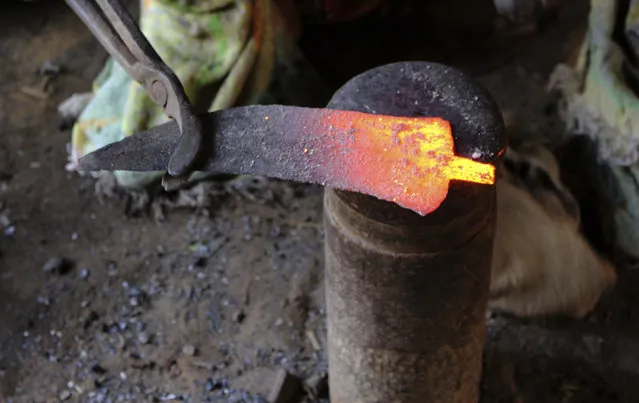
In this October 6, 2018, photo, a craftsman makes daggers or “Jambiyya” in Yemeni Arabic, made out of remains of missiles, at his workshop, in Hajjah, Yemen. (Photo by Hammadi Issa/AP Photo)
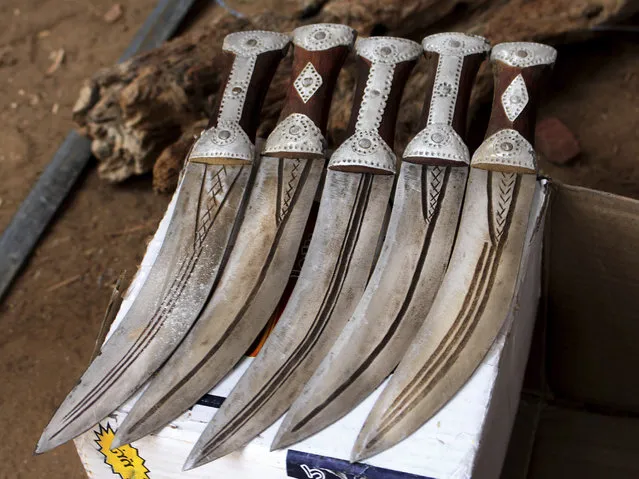
This August 4, 2018, photo, shows the final result of daggers or “Jambiyya” in Yemeni Arabic, made out of remains of missiles, at a workshop, in Hajjah, Yemen. (Photo by Hammadi Issa/AP Photo)
10 Oct 2018 00:01:00,
post received
0 comments
